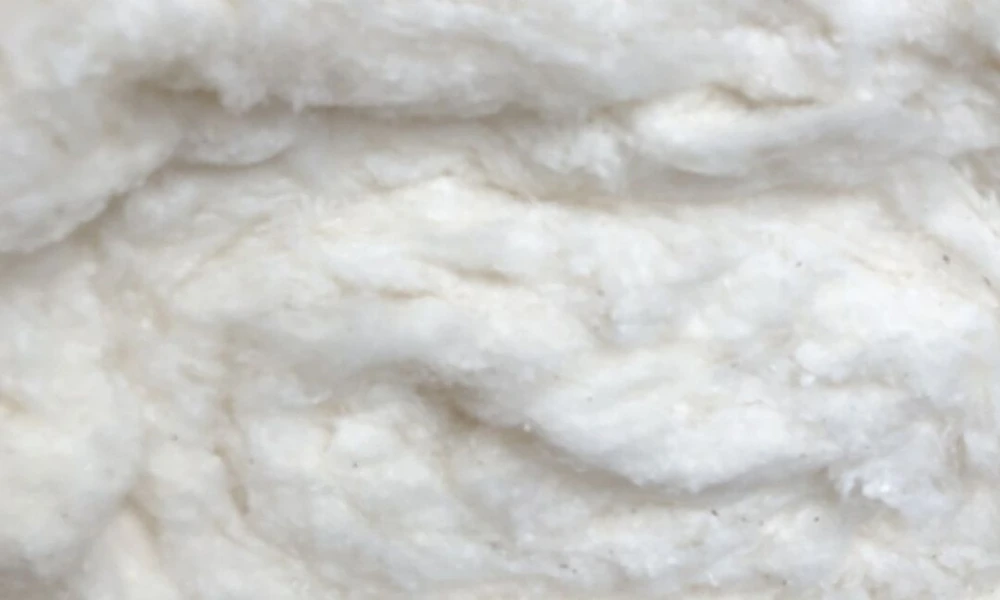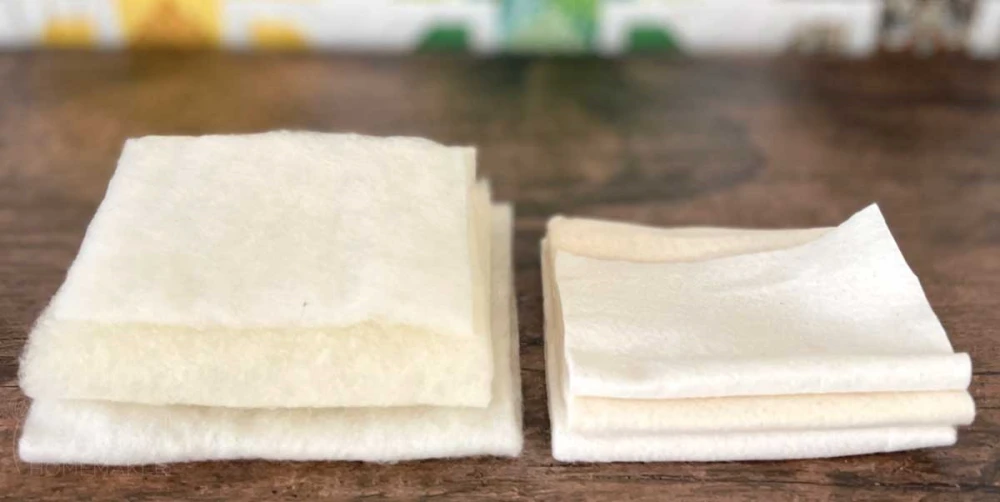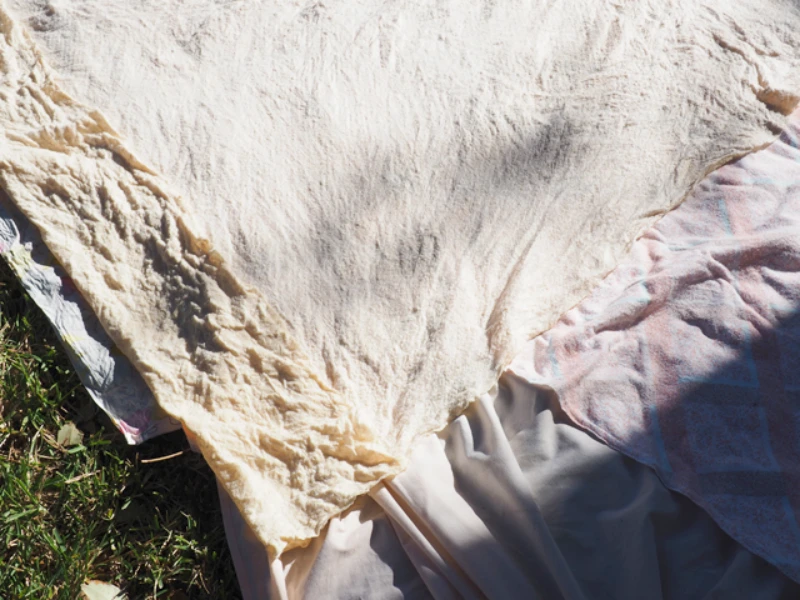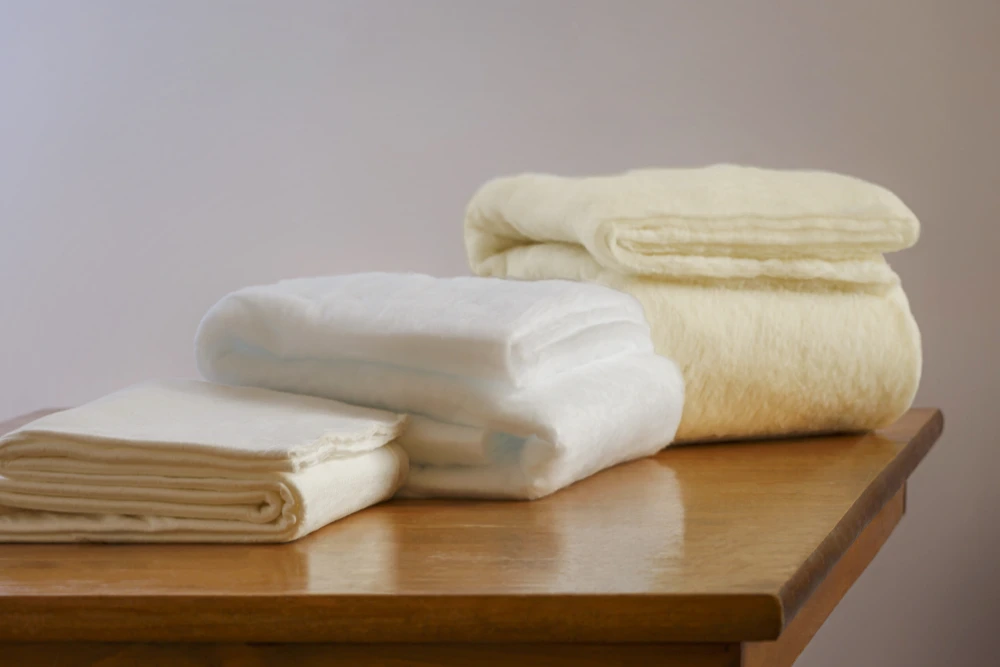If you’re working on a quilting project, you’ve probably wondered, does cotton batting shrink? The answer is yes, cotton batting can shrink, but understanding how and why it happens will help you manage it for the best results.
Shrinkage depends on factors like washing methods, temperature, and the type of batting you use. To avoid surprises, it’s important to pre-shrink your cotton batting before starting your quilt. Ready to learn more about how to handle cotton batting? Let’s dive in!
What Is Cotton Batting?

Cotton batting is a soft, natural material used to provide loft and warmth in quilts. It helps create the structure of the quilt, giving it a full, smooth appearance. Compared to polyester, cotton batting is more breathable and eco-friendly, while bamboo batting offers additional softness and moisture-wicking properties.
Cotton batting is commonly used in quilting, comforters, and other fabric crafts, offering durability and a classic, timeless feel.
Does Cotton Batting Shrink?

Yes, cotton batting does shrink. Several factors contribute to this shrinkage, including heat, moisture, and agitation during washing and drying. The amount of shrinkage varies depending on the type of cotton batting, but you can typically expect around 3-5% shrinkage. To minimize this, it’s recommended to pre-wash and pre-shrink the batting before use, ensuring it holds its shape and stays consistent throughout the quilting process.
Why Does Cotton Batting Shrink?

Cotton Fiber Properties:
Cotton fibers are natural and tend to absorb moisture. When these fibers are exposed to water and heat, they contract and shrink. This property is inherent in cotton, making it prone to shrinkage during washing or drying. The more tightly the fibers are spun, the more they may shrink as they expand and contract with temperature changes.
The Weaving Process and Shrinkage:
The way cotton batting is woven affects how much it shrinks. Loose weaves tend to shrink more than tight weaves because the fibers are less secured. As the fibers tighten and compress during washing or drying, they pull together, leading to shrinkage. The amount of shrinkage can also depend on whether the batting has been pre-washed before production.
Heat and Moisture Impact:
Heat and moisture are the primary triggers for cotton batting shrinkage. When exposed to hot water or high dryer temperatures, cotton fibers contract. The moisture causes the fibers to expand, and the heat accelerates this shrinking process. This is why controlling wash and drying temperatures is essential to managing cotton batting shrinkage.
Managing Cotton Batting Shrinkage:
To manage shrinkage, always pre-wash and dry your cotton batting before use. This helps minimize unexpected shrinkage in your final quilt. Use cool or lukewarm water and avoid high heat in the dryer. Some quilters even choose to air dry batting to prevent excessive shrinkage, maintaining consistent size and shape for their projects.
Pre-Washing Tips to Control Shrinkage
Cold vs. Warm Water: Washing & Drying Options: When pre-washing cotton batting, use cold or lukewarm water to minimize shrinkage. Hot water can cause the batting to shrink more than expected. Avoid using high heat when drying as well. Instead, tumble dry on low or air dry to control shrinkage.
How to Pre-Shrink Cotton Batting: Start by washing your cotton batting in cold or lukewarm water. Use a gentle detergent to protect the fibers. After washing, tumble dry on low heat or air dry flat. Be sure to check the batting for any shrinkage, and repeat the process if needed. This pre-shrinking step ensures the batting maintains its size and performance when you use it in your quilt.
Best Practices to Prevent Excessive Shrinkage: To avoid excessive shrinkage, always pre-wash cotton batting before use. Use the lowest possible heat when drying and consider using a mesh bag during washing to reduce agitation. If you’re concerned about shrinkage, test a small piece of batting first. By following these steps, you can confidently answer, Does cotton batting shrink? with minimal impact on your project.
How Much Does Cotton Batting Shrink?

Shrinkage Variations Based on Brand & Batting Type: Yes, does cotton batting shrink, and the amount can vary. Different brands and batting types (e.g., organic, blended, or processed cotton) may shrink more or less. Typically, expect a 3-5% shrinkage rate, but check the manufacturer’s recommendations to understand the specific shrinkage potential of your batting. Pre-shrinking can help manage this variability.
Cotton Batting Shrinkage Scenarios: Cotton batting shrinkage can occur during washing and drying, especially when exposed to heat or moisture. If you wash your batting in hot water or dry it at high heat, it may shrink more than expected. To control this, use cool water and low heat settings. For best results, always pre-wash your batting before using it in your quilt project.
Does Cotton Batting Shrink After Quilting? After quilting, cotton batting may continue to shrink, but it’s usually minimal. The quilted layers hold the batting in place, which reduces further shrinkage. However, it’s important to remember that some shrinkage will naturally occur after quilting, especially if the quilt is washed for the first time. To minimize surprises, pre-shrink the batting beforehand.
Alternative Options to Reduce Shrinkage
Pre-Washed vs. Non-Pre-Washed Cotton Batting: Yes, and the amount of shrinkage depends on whether the batting has been pre-washed. Pre-washed cotton batting shrinks less during quilting, as it has already undergone shrinkage. Non-pre-washed batting may shrink more, especially after washing and quilting. Always check the label and consider pre-shrinking to avoid surprises in your finished project.
Quilting & Washing’s Effect on Final Shrinkage:
Quilting can affect shrinkage in cotton batting. During quilting, the fabric is stitched and compressed, which can limit further shrinkage. However, once you wash the quilt, the batting can shrink more due to moisture and heat. Expect up to 3-5% shrinkage after quilting and washing. To minimize this, follow proper pre-washing and drying techniques to ensure consistent results in your quilt.
Alternative Ways to Reduce Shrinkage:
To reduce shrinkage, you can opt for batting made from a blend of cotton and polyester. These blends often shrink less than pure cotton batting. Additionally, using low heat for drying and washing with cold water can prevent excessive shrinkage. For projects that demand minimal shrinkage, consider using pre-washed batting or synthetic alternatives like bamboo or polyester for more predictable results.
Does Quilters Cotton Shrink?
Yes, quilter’s cotton does shrink. Like most natural fabrics, cotton fibers shrink when exposed to heat and moisture. Typically, quilter’s cotton can shrink around 3-5% after washing. To minimize this, it’s a good idea to pre-wash your fabric before cutting and sewing.
Pre-shrinking helps avoid surprises later, especially when making a quilt that will go through multiple wash cycles. Always follow the manufacturer’s care instructions for the best results.
Conclusion
Now you know does cotton batting shrink and why it happens. Understanding how cotton batting reacts to heat, moisture, and agitation helps you prepare for your quilting projects. Pre-washing your cotton batting is a smart way to control shrinkage and maintain your quilt’s shape. Ready to create a stunning quilt without worrying about shrinkage? Quote your cotton batting from F&A today for premium quality and reliable results!
FAQ
Can you put cotton batting in the dryer?
Yes, you can put cotton batting in the dryer, but it’s best to use low heat or air dry to prevent excessive shrinkage. High heat can cause more shrinkage, so always follow the manufacturer’s care instructions for the best results.
Which quilt batting shrinks the least?
Polyester batting shrinks the least compared to cotton batting. If you’re looking for minimal shrinkage, polyester or a cotton-polyester blend is a great option. These types of batting maintain their shape better after washing and drying.
How close does cotton batting need to be quilted?
Cotton batting typically needs to be quilted every 8 to 10 inches to prevent shifting. However, this can vary depending on the thickness of the batting. Always check the manufacturer’s recommendations for the best quilting spacing.
Does 100% cotton batting shrink?
Yes, 100% cotton batting does shrink, usually around 3-5%. This shrinkage occurs due to the natural fibers of cotton. To control it, pre-wash your batting before using it in your quilt, especially if you want to avoid unexpected shrinkage after the quilt is finished.
What can I use instead of batting in a quilt?
If you want an alternative to traditional batting, you can use materials like flannel, fleece, or even old sheets for a more eco-friendly option. These alternatives add warmth and structure to your quilt, though they may behave differently than standard batting.
Should you wash quilt batting before sewing?
It’s highly recommended to wash quilt batting before sewing, especially if it’s cotton. Pre-washing helps to remove any sizing or chemicals and prevents excessive shrinkage after the quilt is finished. For convenience, look for pre-washed or pre-shrunk batting to save time.
How do you fluff cotton batting?
To fluff cotton batting, gently shake it out or fluff it by hand to break up any clumps and loosen the fibers. You can also place it in the dryer on a low heat setting for about 10-15 minutes with a couple of clean tennis balls or dryer balls to help fluff it up. Avoid high heat, as it can cause the batting to shrink or lose its loft. If you prefer, you can also fluff it by hand as you work with it, especially before sewing it into your quilt.
